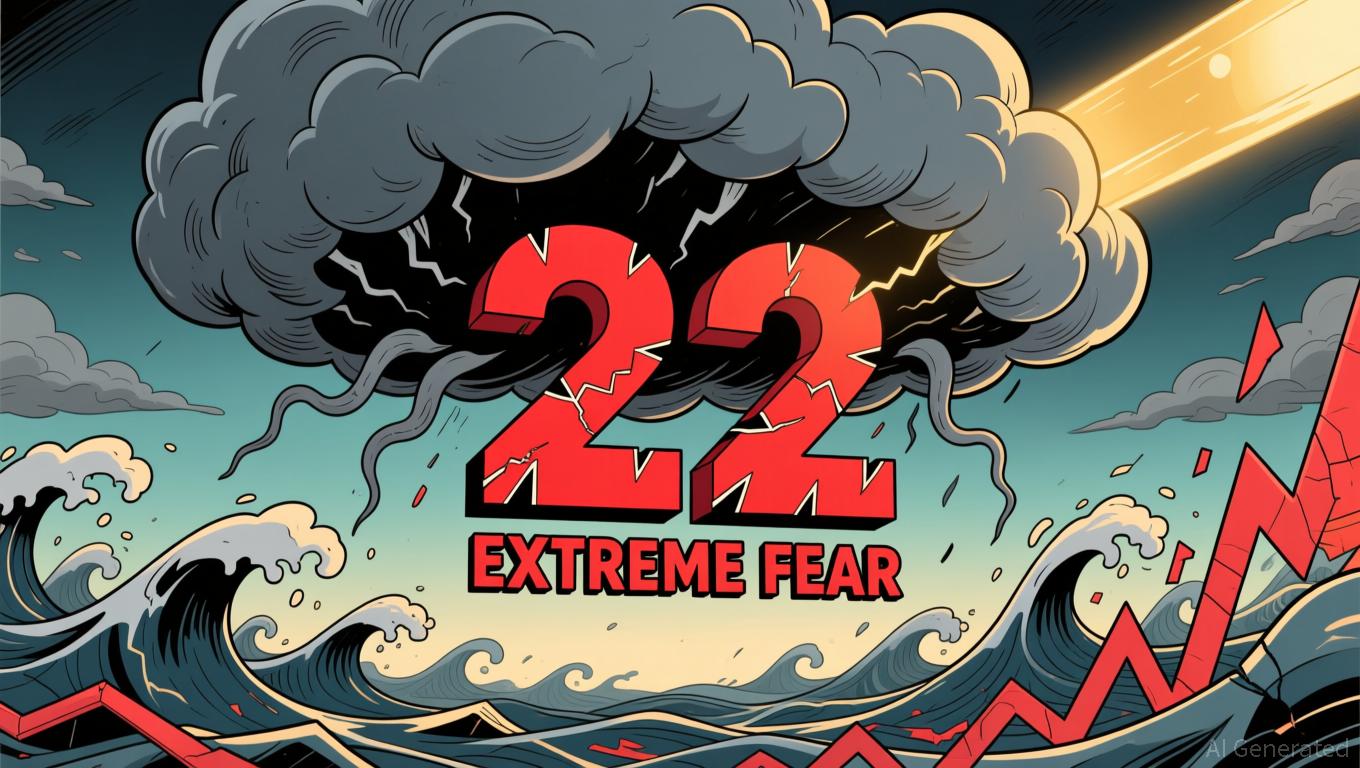The Factors That Led to Bitcoin’s Sharp Decline at the End of 2025
- Bitcoin's late-2025 crash stemmed from Fed rate hikes, regulatory ambiguity, and institutional risk aversion despite adoption growth. - The Fed's hawkish stance reduced liquidity, pushing investors toward fixed-income assets while SEC's inconsistent enforcement deepened uncertainty. - Institutional Bitcoin holdings (3.5% circulating supply) couldn't offset sell-offs as macroeconomic pressures and legal vacuums triggered hedging strategies. - Market participants now prioritize rate-hedging tools, regulato
Macroeconomic Pressures: The Fed’s Tightening Grip
The Federal Reserve’s approach to interest rates played a pivotal role in Bitcoin’s late-2025 decline. Despite rate reductions in September and October 2025, officials like Boston President Susan Collins indicated a reluctance to ease further, pointing to ongoing inflation and the risks of acting too soon
Rising interest rates generally make non-yielding assets like Bitcoin less attractive, as investors shift toward fixed-income products with assured returns. The Fed’s hesitance to lower rates further also tightened overall market liquidity, intensifying risk-averse behavior. As Collins noted,
Regulatory Uncertainty: The SEC’s Ambivalent Role
What was once a supportive regulatory environment for Bitcoin adoption became a source of instability by late 2025. The U.S. Securities and Exchange Commission (SEC) significantly scaled back its enforcement in fiscal year 2025, initiating
Although the SEC’s lighter touch could have been seen as a positive for the sector, the absence of clear rules—especially regarding stablecoins and derivatives—added to the volatility. The GENIUS Act brought some clarity for stablecoins, but with the CLARITY Act still pending, regulatory gaps persisted
Institutional Sentiment: Adoption vs. Risk Aversion
Despite strong institutional interest in Bitcoin, it was not enough to prevent a widespread sell-off. By late 2025, digital asset treasury firms (DATs)
The SEC’s decision to drop its case against SolarWinds and its chief security officer in November 2025 further illustrated the agency’s changing focus,
Implications for Crypto Asset Strategies
The late-2025 downturn highlights the importance for crypto investors to temper optimism with prudence. While institutional involvement and regulatory advances remain supportive, the combination of tighter monetary policy and regulatory uncertainty calls for a more sophisticated strategy. In the upcoming quarter, investors should focus on:
1. Managing Interest Rate Exposure: Allocating part of their crypto holdings to yield-generating stablecoins or Bitcoin derivatives to offset rate risks.
2. Staying Alert to Regulatory Shifts: Keeping a close watch on the CLARITY Act and any changes in SEC enforcement that could spark renewed volatility.
3. Broadening Institutional Diversification: Avoiding overconcentration in single assets and considering multi-asset crypto portfolios to cushion against sector-specific disruptions.
Conclusion
Bitcoin’s late-2025 decline was not due to a flaw in the asset itself, but rather the result of broader forces—Federal Reserve policy, regulatory ambiguity, and institutional caution—that temporarily overshadowed its fundamentals. As the market adjusts to these dynamics, the future will depend on whether economic stability and regulatory clarity can once again take center stage. For now, investors must steer through an environment where hope and caution must coexist.
Disclaimer: The content of this article solely reflects the author's opinion and does not represent the platform in any capacity. This article is not intended to serve as a reference for making investment decisions.
You may also like
Switzerland Postpones Crypto Tax Data Exchange to Meet Technological and International Requirements
- Switzerland delays crypto tax data sharing until 2027, aligning with global regulatory reevaluations amid evolving tech and market dynamics. - SGS acquires Australia's Information Quality to boost digital revenue, reflecting Swiss firms' expansion into tech-driven compliance solutions. - Canada's Alberta oil sands policy shift highlights governments prioritizing economic growth over strict climate regulations, mirroring Switzerland's approach. - BridgeBio's precision medicine and Aires' EMF solutions dem

Switzerland's Focus on Privacy Conflicts with International Efforts for Crypto Taxation
- Switzerland delays crypto tax data sharing with international partners until 2027, contrasting with global regulatory efforts to close offshore loopholes. - The U.S. advances implementation of the OECD's CARF framework, aiming to automate reporting on foreign crypto accounts by 2029. - CARF requires foreign exchanges to report U.S. account details, mirroring traditional tax standards and targeting crypto tax evasion. - Switzerland's privacy-focused stance highlights tensions between financial confidentia

Zcash News Update: Reliance Shifts Entirely to Zcash, Citing Privacy and Regulatory Alignment
- Reliance Global Group, a Nasdaq-listed fintech firm, shifted its entire crypto portfolio to Zcash (ZEC), divesting Bitcoin , Ethereum , and other major coins. - The strategic pivot, announced November 25, prioritizes Zcash's privacy-focused zk-SNARKs technology for institutional compliance and selective data disclosure. - Zcash's 1,200% 90-day price surge and Grayscale's ETF filing highlight growing institutional interest in privacy-centric assets. - The move reflects broader crypto industry trends towar
Bitcoin News Update: Bitcoin Fear Index Drops to 22 While Investors Look for Signs of Market Rebound
- Bitcoin Fear & Greed Index rose to 22 from 20, indicating slight easing of extreme fear but persistent bearish sentiment. - Bitcoin stabilized near $87,000 after hitting $80,553, yet remains below key resistance levels amid $3.5B ETF outflows. - Structural factors like leverage and liquidations drive selloffs, with ETF redemptions correlating to 3.4% price drops per $1B outflow. - Analysts note oversold technical indicators and waning retail capitulation as potential inflection points for near-term rebou
